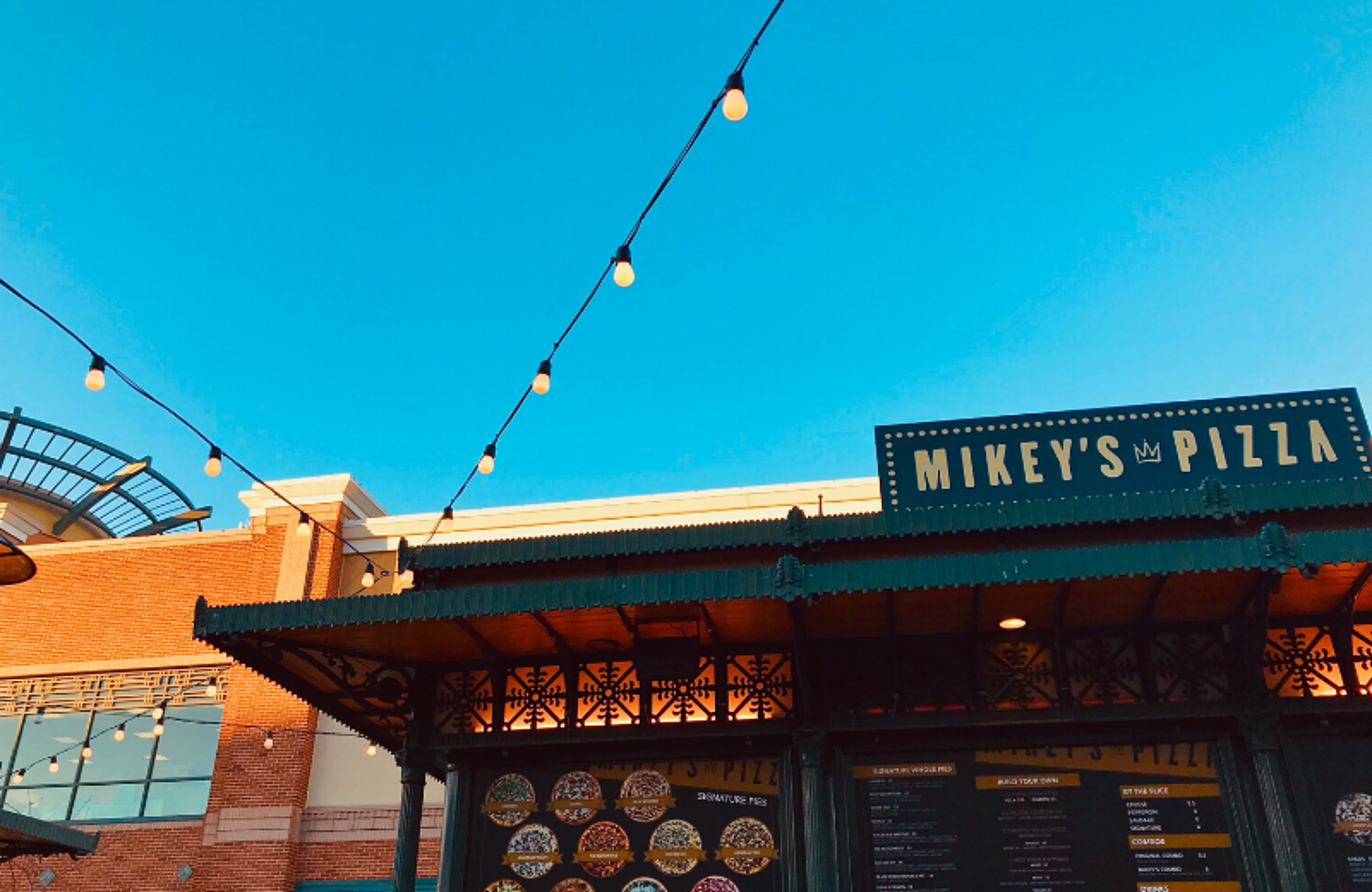
How to Build a Prix Fixe Menu for Your Restaurant
The what, why, and how behind prix fixe menus

Alessandra KoppAuthor
My first encounter with a prix fixe menu came on my 9th birthday.
The idea of sitting back and entrusting a group of culinary professionals to determine the course of my meal was as thrilling as it was comforting. The dishes came and went, but my obsession with the elevated dining experience is one of constant devotion.
To the restaurant owner, offering a prix fixe dining option can not only breathe life into dusty old menus but can help avoid stagnation in a highly competitive industry.
In this article, we’ll:
- Define prix fixe.
- Get to know the history of prix fixe menus better.
- Learn the step-by-step art of putting a prix fixe menu together.
- Explore how prix fixe can work in your restaurants.
- Highlight the benefits of this popular menu design.
Menu Engineering Course
Take this course to make the most of your menu. Learn about menu psychology and design, managing your menu online, and adapting your menu to increase sales.

What is a Prix Fixe Menu? (Definition)
Simply put, a prix fixe menu (pronounced “pre feks”) is a multi-course meal available for a “fixed price.” There can be as few as two or as many as ten or more courses. Sometimes, the menu is completely determined by the chef – you’re told what the courses will be and that’s that.
These kinds of menus can also be referred to as “tasting menus” or “set menus.” Other times, guests can choose between options within categories (i.e. appetizers, mains, and desserts), thereby adding an element of customization to their order.
Prix fixe contrasts with another fancy French term, “a la carte,” which is when items on a menu are listed separately and with their own individual prices. For example, you might order a steak, a baked potato side, and a salad, choosing every item you want to eat and paying for each one separately.
The History of Prix Fixe Menus in Restaurants
Prix fixe menus originated in France from “the king of chefs and the chef of kings,” Georges Auguste Escoffier.
Born in 1846, Escoffier eventually became chef de cuisine at the Grand Hotel in Monte Carlo. It was here that he developed the first prix fixe menu for parties of four or more to both increase the kitchen’s output and make it easier on English speaking guests who could now order a deliciously curated meal without fumbling.
Prix fixe menus continue to be popular today and there is no shortage of country-specific practices. Here are some examples.
- In the United States, many restaurants convert their menus to prix fixe only for special occasions or holidays when families dine together, like Mother’s Day or Valentine’s Day. Restaurants that offer prix fixe/tasting menus on the regular tend to have higher price points.
- In Spain, prix fixe menus, or “menu del dia," are extremely common in bars and restaurants. Available weekdays for lunch only, they consist of multiple courses for a very reasonable fixed price, booze included. Prices range from €8-30 with €10 being the average.
- India, among other South Asian countries, serves up a version of the prix fixe called “thali.” Thali is made up of a selection of various dishes served on a platter and is meant to offer all the six different flavors of sweet, salt, bitter, sour, astringent, and spicy on one single plate.
- Japan has teishoku, where all of the dishes in the course are served together as a set. Teishoku is commonly served in local eateries and family restaurants for lunch and dinner, but some restaurants have been serving small meal sets for breakfast as well. It’s a healthy, convenient, and affordable meal option for people of all demographics, from families with small children to office workers.
How to Create a Prix Fixe Menu
Designing a prix fixe menu is like piecing together a puzzle. With so many factors to consider – flavors, textures, aesthetics, etc. – the task might seem daunting.
But just like a puzzle, if you stick to a plan and a process, the results are beautiful.
Here are some tips for putting together the perfect restaurant prix fixe menu.
1. Pick a Theme
Themes can be seasonal or geographical.
Say, for instance, the theme was “A Night in the French Quarter.” The menu might include turtle soup, a fancied-up version of red rice and beans, and of course, freshly powdered beignets.
Other concepts, like Bar Boulud in Boston, have taken a slightly different route merging themes. Their prix fixe lunch menu is largely French-inspired but also highlights New England ingredients such as Boston lettuce, local cod, as well as seasonal desserts options.
No matter what you decide, the idea should be to set some boundaries so the menu can be cohesive, creative, and showcase flavors that go together.
2. Decide on the Number of Courses
Once you’ve decided your theme, the next step should be narrowing down the amount of courses you will offer.
A manageable amount might be three: appetizers, main dishes, and desserts. From there, you will decide on the number of dishes you’d like available under each course.
3. Keep it Simple
It’s important to remember the size and capacity of your kitchen.
Having options is terrific, but make sure it won’t have a negative impact on the consistency of the food or the guest experience. You’ll also want to make sure your distribution of complicated and simple dishes is somewhat even, as to not overwhelm the kitchen.
4. Be Prepared
Mise en place is of vital importance when offering a prix fixe menu. All dishes should be arriving in a timely manner and at the same time for every table member. Having all of your ingredients prepared and ready to go before you even start cooking will make or break your menu.
5. Allow for Pairings
Wine or beer pairings are fun. Not only can offering one alongside your prix fixe menu make the guest experience more enjoyable, but it also augments the cuisine. Restaurant owners can leverage pairings as a great way to increase average spend per ticket.
6. Allow for Dietary Restrictions
Dietary requests are very common nowadays; gluten-free, vegan, nut-free are just a few examples. Be prepared to offer alternatives that will satisfy a wide-array of dietary concerns so you don’t lose out on potential prix fixe customers.
7. Consider the Tasting Journey
Striking a good balance between flavor profiles and textures will enhance your prix fixe menu.
For example, a Mediterranean-inspired appetizer consisting of octopus, white potatoes, and celery offers a pleasing contrast between the savory, sweet, and astringent flavor profiles, while also experimenting with different textures.
Furthermore, consider the natural progression of the meal from light to heavy. For example, one wouldn’t start with the wagyu beef and end with a ceviche.
8. Stay on Pace
Last but not least, pacing your prix fixe menu is critical.
Food should arrive at leisurely and well-timed intervals so guests never feel too full. Avoiding awkward lags is equally important so guests feel engaged throughout the entire meal.
Whether you’re serving three or 21 courses, proper pacing will create a relaxed and sophisticated experience guests will remember for years to come.
How to Incorporate a Prix Fixe Menu in Your Restaurant
Despite what the etymology of the word suggests, there is no singular, “fixed” way to incorporate a prix fixe menu at your restaurant.
There are a number of ways that a fixed-price setup might work for your business. Here are a few to consider.
Recipe Card Template
Train your team with this recipe card template, a customizable Excel sheet that outlines recipe requirements for chefs and back of house staff.

Option #1. All fixed price, all the time
Fine dining and prix fixe go hand in hand. These restaurants tend to employ famous chefs whose skill level is best suited for prix fixe/tasting menus. While high average ticket sizes will certainly discourage some guests from making the upfront financial commitment, “destination restaurants” like these are great for special occasions.
Some examples include Alinea in Chicago, Eleven Madison Park in New York City, and The French Laundry in Yountville, California — all of which serve exclusively prix fixe menus.
Here’s a sample menu from The French Laundry. At a restaurant of this caliber, you’ll want to sit back and let Thomas Keller make the decisions for you.

Option #2: Prix fixe alongside a la carte
For restaurants that are between fine dining and casual, offering both prix fixe and a la carte can make a lot of sense.
The greater range in ticket sizes makes these concepts a more attainable culinary destination for a wider audience. If opting for this option, you’ll want to make sure both sides of the menu are comparable so guests don’t feel like they missed out or ordered the wrong thing.

Craigie on Main in Cambridge, Massachusetts has been successfully executing on this dual-concept approach for years. They feature a high-end a la carte menu alongside two prix fixe options, both at varying price points and with dietary substitutions available. They have their bases covered.
Option #3: Prix fixe lunches
If you’re not a traditional quick-service or well-known business lunch establishment, it can be difficult getting people in the door between 11 a.m. and 2 p.m. Offering a prix fixe during lunch is a great way to attract new customers, but you’ll want to make it reasonably priced to stay competitive.
Take The Four Horsemen in Brooklyn, New York for example. This highly-esteemed, natural wine-centric gastropub also serves up one of the greatest lunch deals in New York. For only $28, guests can enjoy an almost daily changing menu of carefully curated dishes. What a steal!
Option #4: Prix fixe special occasions
Even if you’re generally not a prix fixe establishment, switching to a prix fixe menu can be a smart choice on holidays when there is a ton of demand for eating out. This includes days like Thanksgiving, Valentine’s Day, and New Year’s Eve.
Not only will it make kitchen operations easier to manage and allow for greater output, you’ll be able to more accurately forecast your revenue those evenings.
Option #5: Restaurant weeks
Restaurant week has gained a lot of popularity across American cities in recent years.
A restaurant week prix fixe menu is a lucrative way to attract new customers who might otherwise think your restaurant is out of their price range. When creating your restaurant week prix fixe menu, you’ll want to create something appealing enough so that new patrons will remember you and come back.
Think of these restaurant week prix fixe menus as a first date – if you don’t make a good first impression, chances are you won’t be seeing them again.
The Benefits of a Prix Fixe Menu
So what exactly is the advantage of a prix fixe menu? Turns out there are many. In fact, the prix fixe benefits all parties on the dining spectrum.
Back of House Staff
For chefs, the prix fixe menu offers a chance to create a meal, from start to finish, the way they think is best. Released from the chains of the day-to-day menu, chefs can showcase their creativity and really make a statement with their food.
For restaurant owners, it’s easier to estimate and anticipate your sales forecast so long as you know how many people are seated per table.
Front of House Staff
In terms of service, the prix fixe can allow the meal to be perfectly timed so that every guest receives their food simultaneously.
The table can also be set in advance, which lends an air of sophistication to any dining experience.
The Guest
Adventurous and open-minded diners alike will be drawn to the prix fixe. These menus provide the perfect platform for experimentation and add something special to the customer dining experience.
Prix Fixe in Your Restaurant
There are so many ways that a prix fixe menu can be applicable to your concept. But before you decide to do a complete overhaul of your menu, you’ll want to have a clear understanding of how your current restaurant menu is performing to determine what dishes/themes are best suited to pioneer a new menu.
Whether you own a new restaurant or have been in the game for years, offering some version of the prix fixe menu can be a great way to revamp your business and get new guests in the door.
Related Menu Ideas
Is this article helpful?
DISCLAIMER: This information is provided for general informational purposes only, and publication does not constitute an endorsement. Toast does not warrant the accuracy or completeness of any information, text, graphics, links, or other items contained within this content. Toast does not guarantee you will achieve any specific results if you follow any advice herein. It may be advisable for you to consult with a professional such as a lawyer, accountant, or business advisor for advice specific to your situation.
Read More
Subscribe to On the Line
Sign up to get industry intel, advice, tools, and honest takes from real people tackling their restaurants’ greatest challenges.





